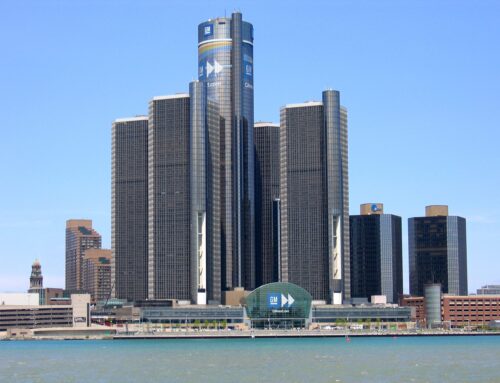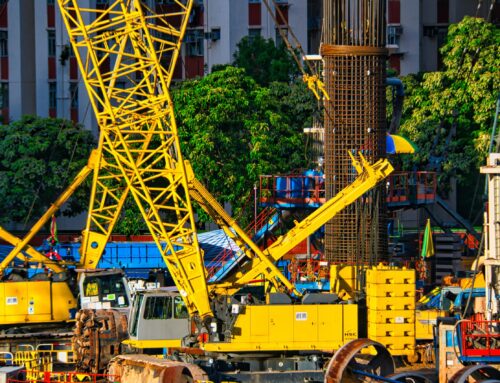Description and Details
The Berkeley Pit in Butte, Montana is a former open-pit copper mine that has transitioned from an engine of economic prosperity to a site of environmental and humanitarian concern due to its transformation into a toxic lake following the closure of mining operations. The Berkeley Pit illustrates the pressing need for sustainable mining practices and robust post-mining strategies to address environmental degradation and pollutant exposure to local communities.
At its peak, Butte’s richness in copper led to its nickname “The Richest Hill on Earth,” with the Berkeley Pit as one of the largest truck-operated open-pit copper mines in the United States. Operations at the pit, which began in 1955 and continued until 1982, excavated an immense cavity stretching over 1.5 miles long, 1 mile wide, and 1,600 feet deep. The wealth drawn from the pit fueled the economy but at grave environmental and health costs to the surrounding ecosystem and community.
Upon termination of mining, dewatering pumps were switched off, leading to the gradual accumulation of water in the pit. Rainfall and groundwater inflow resulted in a toxic lake with dangerously high concentrations of heavy metals like arsenic, cadmium, zinc, and sulfuric acid, among other contaminants. As of 2023, the Berkeley Pit water level had reached over 900 feet deep, posing a threat to the surrounding groundwater and the ecosystems of Butte, Montana. 30 billion gallons of acidic water inhibit natural flora and fauna from thriving, highlighting severe ecological impacts. Migratory bird deaths in the thousands have been recorded over the years as they land on the deceptively inviting, yet highly acidic and metal-laden lake.
The health effects on residents surrounding the Berkeley Pit are of significant concern and take both a physiological and psychological toll on the community. Long-term exposure to heavy metals and other toxic substances commonly associated with the Pit can lead to serious health issues, including respiratory problems, skin disorders, and an increased risk of cancers, such as lung and kidney cancer due to arsenic and silica particulate exposure. Moreover, children are particularly vulnerable, with potential developmental delays and cognitive impairments linked to lead exposure. Mental health is also impacted as residents live with the stress and anxiety of potential health risks and environmental degradation of their hometown.
The Environmental Protection Agency (EPA) has played a critical role in addressing the cleanup of hazardous conditions at the Berkeley Pit and its surroundings. For five years the site was abandoned and unmitigated until it became the largest site of the EPA’s Superfund program in 1987, which recognized and mobilized cleanup efforts for some of the nation’s most contaminated lands. To mitigate the impact of the toxic waters, the EPA has developed a multi-faceted remedial plan in collaboration with the state of Montana, local officials, and Atlantic Richfield Company (ARCO), which inherited the liabilities of Anaconda Copper, the company originally responsible for the mine. A key component of the cleanup strategy is maintaining water levels below a critical point to ensure contaminated water does not overflow into the local groundwater system. To accomplish this, the EPA constructed the Horseshoe Bend Water Treatment Plant, which can treat 7 million gallons of water a day pumped from the Berkeley Pit and surrounding mines. The plant removes heavy metals and neutralizes acidity before the water enters the nearby Silver Bow Creek or the Clark Fork River. Additionally, stormwater channels have been built to direct water from the mining site directly into the Berkely Pit to reduce contaminated runoff reaching the groundwater. In total, the water treatment operation is a cornerstone of the region’s environmental management plan and has undoubtedly saved the citizens of Butte, Montana from further exposure to the toxic remains of the open pit mine. However, this remediation strategy needs to be constantly monitored and maintained. The Berkeley Pit is currently federally mandated to be maintained forever, but a drastic change in policy or EPA funding could result in disaster for the residents and environment of Butte.
The Berkeley Pit case study serves as a cautionary tale of the enduring environmental and humanitarian impacts mining operations can have post-operation. Due to the absence of responsible mine management and comprehensive environmental legislation, the residents of Butte, Montana will forever have the threat of a toxic pit looming over the health of their community. Looking to the future, proposals such as stricter closure procedures for mines, continuous monitoring of environmental conditions, and adequate financial assurance for post-mining clean-up activities could all contribute to mitigating and preventing long-term environmental and humanitarian impacts caused by sites such as the Berkeley Pit.
Discussion Questions
1. How can the mining industry be held more accountable for the long-term environmental and health consequences of their operations, and what regulatory frameworks or financial mechanisms could be established to ensure that mining companies bear the responsibility for cleanup and healthcare costs associated with their activities?
2. In the case of the Berkeley Pit, where the liabilities of Anaconda Copper were inherited by the Atlantic Richfield Company (ARCO), what lessons can be drawn for establishing clearer and more enforceable legal frameworks that compel successor companies to fulfill their obligations for post-mining environmental and healthcare responsibilities?
3. Given the potential vulnerability of the cleanup strategy to changes in policy or funding, what community-led initiatives or partnerships could be established to ensure the ongoing maintenance and monitoring of the Berkeley Pit, independently of federal mandates or regulatory shifts?
References
Popular Media/News References:
SUPERFUND-Understanding the Superfund ProcessSuperfund Terms & The Berkeley Pit
Berkeley Pit Landmark
https://www.visitmt.com/listings/general/landmark/berkeley-pit#:~:text=The%20Berkeley%20Pit%20is%207%2C000,which%20is%20filling%20with%20water.
EPA Announces Cleanup Deal For One Of The Biggest Superfund Sites In The U.S.
https://www.npr.org/2020/02/16/806417345/epa-announces-cleanup-deal-for-one-of-the-biggest-superfund-sites-in-the-u‑s
Health Hazards from Mining in Butte, Montana
https://serc.carleton.edu/NAGTWorkshops/health/case_studies/butte_case_stud.html
In a toxin-exposed Montana mining town, the EPA favors polluters
https://crosscut.com/environment/2023/03/toxin-exposed-montana-mining-town-epa-favors-polluters
Environmental Risks of Mining
https://web.mit.edu/12.000/www/m2016/finalwebsite/problems/mining.html
The Environmental Disaster That is the Gold Industry
https://www.smithsonianmag.com/science-nature/environmental-disaster-gold-industry-180949762/#:~:text=Exposing%20the%20deep%20earth%20to,airborne%20elemental%20mercury%20every%20year.




Leave A Comment